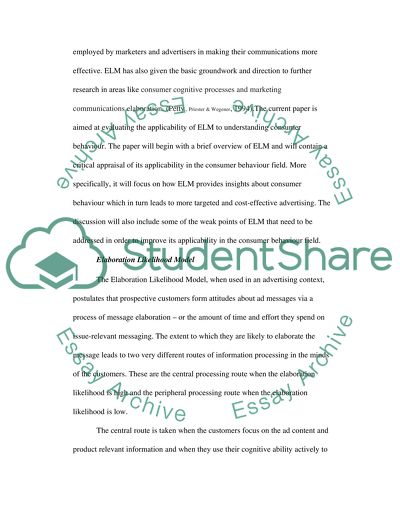Cite this document
(The Applicability of the Elaboration Likelihood Model to Understanding Coursework, n.d.)
The Applicability of the Elaboration Likelihood Model to Understanding Coursework. Retrieved from https://studentshare.org/marketing/1555130-critically-discuss-the-applicability-of-the-elaboration-likelihood-model-to-understanding-consumer-behaviour
The Applicability of the Elaboration Likelihood Model to Understanding Coursework. Retrieved from https://studentshare.org/marketing/1555130-critically-discuss-the-applicability-of-the-elaboration-likelihood-model-to-understanding-consumer-behaviour
(The Applicability of the Elaboration Likelihood Model to Understanding Coursework)
The Applicability of the Elaboration Likelihood Model to Understanding Coursework. https://studentshare.org/marketing/1555130-critically-discuss-the-applicability-of-the-elaboration-likelihood-model-to-understanding-consumer-behaviour.
The Applicability of the Elaboration Likelihood Model to Understanding Coursework. https://studentshare.org/marketing/1555130-critically-discuss-the-applicability-of-the-elaboration-likelihood-model-to-understanding-consumer-behaviour.
“The Applicability of the Elaboration Likelihood Model to Understanding Coursework”, n.d. https://studentshare.org/marketing/1555130-critically-discuss-the-applicability-of-the-elaboration-likelihood-model-to-understanding-consumer-behaviour.


